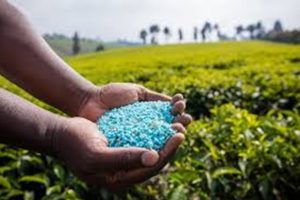
BY ABEBE WOLDEGIORGIS
As a nation of mostly agrarian population, 34.1 percent of Gross Domestic Product of Ethiopia’s economy is based on Agriculture. Besides, the sector is a means of living for 79 percent of the population. In a similar way, it contributes 79 percent for export earnings. In addition, it supplies raw materials to the agri-business industries, Getachew Diriba (PhD), an agricultural economist who is working for various wheat firms as a consultant said.
The Ministry of Agriculture has been striving to raise wheat production and productivity since 2019 which is the fourth in its production amount next to Teff, corn and sorghum. It targets to increase the amount of harvest of wheat and substitute the importation of 1.7 million tons of the product by the year 2022/23.
Daniel Muleta (PhD) who is working as a project coordinator in the irrigated wheat farm at the Ethiopian Agricultural Research Institute on his part said that, in Ethiopia, during the main rainy season, 1.8 to 2 million hectares of land is cultivated for wheat production. Even though such large scale land is cultivated for wheat production, Ethiopia could not meet its wheat demand yet. As a result, it imports 25 percent of the total wheat demand to fill the gap.
To that end the government spends 400 to 700 million Dollars per year. Ethiopia exports agricultural products such as coffee, pulses and oils seed yet it spends the hard currency obtained from these products to balance the wheat deficit.
As to Daniel, if the nation substitutes the wheat it imports from abroad, it can save the hard currency that enables utilize the money to improve agricultural technology and other development scheme.
Costentinos Berihe (PhD), a lecturer at AAU in the department of economics on his part said that importation of wheat costs the government huge money and recently it spends about 700 million Dollars for importation of wheat to supply as aid to the drought affected people in the south east part of the country.
He further said that during the imperial era, large scale farming which produces wheat was expanded in Arsi and Bale zones of Oromia region and it again expanded to Wolayta areas. Hence, had it been continued to these days, Ethiopia would have been self- sufficient in wheat production.
In his view, the war broke out in Ukraine critically affected the wheat production and supply globally. Hence, the winter wheat production through irrigation can bring benefit to balance the deficit.
Feto Etamo (PhD) is the General Director of the Ethiopian Agricultural Research Institute. As to him, wheat is the major crop that the nation imports. In the last 10 years, in Ethiopia, the consumption custom of wheat products has been growing and simultaneously, the demand for wheat also has been increasing.
Therefore, to meet the demand, the government has given emphasis for winter wheat production through irrigation.
He further said that when wheat irrigation farm was begun three years ago, many called it as low land wheat production. But as time passed, based on experience gained from other countries, wheat irrigation has been expanded in Awash, Omo, Shebele, the Southern Omo basins including Afar and Somali regions particularly in the Gode areas. Currently, the achievement is scaled up at national level.
As to Daniel, in order to substitute the imported wheat, the Ethiopian Agricultural Research Institute conducted various research works. The study indicates direction in how the nation could be self- sufficient in this regard.
He also said that the government’s strategy of working for wheat self- sufficiency lies on four pillars. The first one is increasing productivity on the land which already cultivated through increasing the utilization of inputs. Secondly, identifying vast land in the low land parts where water is available in the nearest area. The third one is farming in the wet lands where clay soil is sufficiently available which has moisture. The forth one is preparing the land through treating the soil in the places where the land is affected by alkaline substances. And if the practice is fully scaled up, attaining food self – sufficiency will be a reality in the near future.
Four years ago, when irrigation based wheat farm was introduced, it was implemented in 3,500 hectares of land and in the following year it was escalated to 20,000 hectares of land and last year, the wheat farm was practiced on 187 thousand hectares of land.
This year, the cultivation of wheat was enhanced to 404, 900 hectares of land. Out of these, 88 percent of the cultivation was implemented in Oromia region. Out of the remaining 12 percent, 40,000 hectares of land is cultivated in Amhara region; 7,500 hectares in Afar; 5,000 hectares in the Southern Nation and Nationalities region whereas 157 hectares of land is cultivated in the newly established Sidama region for a sample production. It is proved that Sidama has huge potential for irrigated summer wheat production.
In the second round, in addition to irrigation, 257, 800 hectares and 28,000 hectares of land will be cultivated for wheat production in Oromia and Amhara regions respectively by using the rainy season. In general, it is planned that by the end of this year, wheat will be cultivated in 693, 350 hectares of land.
Assuming that if the yield reaches 35 quintals per hectare the total yield will be 25 million quintals during the harvest season.
As to Daniel, following the outbreak of war between Ukraine and Russia, wheat exporting countries showed reluctance to supply their products to the world market due to various reasons. And such measure obviously has been responsible for price hick. Therefore, summer wheat production enables the nation to withstand the crises posed by the shortage of supply of wheat production in the world market.
As to Feto, in Ethiopia, individual wheat consumption is 0.7 quintals. In a rough calculation, multiplying this amount with the country’s total population will give bigger figure about 77million quintals. But currently, the nation produces 50 to 55 million quintals of wheat annually. Hence, the nation’s wheat deficit is 20 million quintals and to balance this deficit, it is coerced to import from abroad.
Paradoxically, the nation has abundant natural resources such as sufficient land, fertile soil, and conducive weather condition, and rivers which flow year to year. Therefore, it is possible to ensure wheat self sufficiency via exploiting theses resources and producing the remaining 20 million quintals. Even if it is scaled up, exportation of wheat also can be realized.
As to Daniel, the government intends to expand wheat cultivated land to one million hectares. Indeed, if some challenges witnessed in the wheat farm projects are addressed, accomplishing the plan can be possible.
He further said that the summer wheat irrigation farm is led by committee and structurally it faced some anomalies which slowed the project’s progress. Therefore, to reverse the situation and to maximize the project’s effort, establishing a pertinent institution at national level which runs its own budget is vital.
In line with this, if the government increases the project budget, rising productivity through provision of training to the farmers will be realized.
Currently, irrigation and water allocation is practiced in a traditional way in which the water is utilized uneconomically. But if the irrigation system is upgraded and supported by technology, better result will be obtained and inviting both the private and public sectors to engage in such farm boosts the production and supply to the market.
As mentioned above, the nation is endowed with sufficient arable land and conducive weather condition which can be a fertile ground for producing not only wheat, but also oil seeds. Hence, by utilizing the abundant resources, the nation can relieve the scarcity of agricultural products and substitute imports. Therefore, investors, instead of doing business as usual which is confined on real estates’ construction and hotel business, should make a difference by engaging in agriculture with modern technology, it was underlined.
THE ETHIOPIAN HERALD FRIDAY 1 JULY 2022





